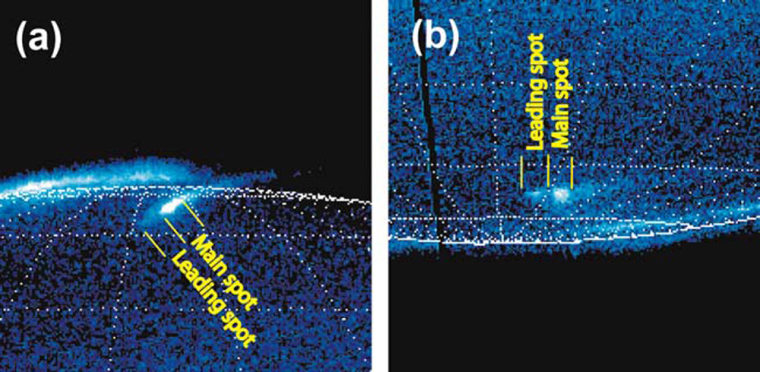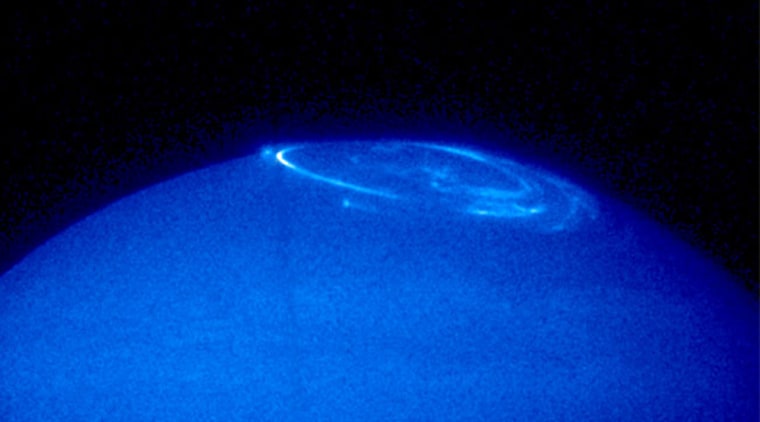Newfound glowing spots on Jupiter seem unexpectedly to come from electron beams whipping around the giant planet's volcanic moon Io.
Io is the most volcanic body in the solar system, with its entire surface likely made up of lava from the moon's hundreds of volcanoes.
Io also causes glowing spots hundreds of miles across on its mother planet that are similar to the aurora borealis or northern lights in the Northern Hemisphere on Earth.
As Jupiter spins, its magnetic field sweeps past Io, stripping off roughly 1 ton of matter off Io every second. This matter becomes electrically charged plasma in the magnetic field, forming a doughnut-shaped cloud. As Io orbits the planet, plasma surges around it like rivers do around boulders, creating waves that blast Jupiter's atmosphere with electrons to create auroras.
The glowing spots on Jupiter are typically located downstream of the flow of charged particles from the plasma torus. Now a team of planetologists unexpectedly found auroras occurring upstream of this flow.
"The results are surprising because no theory predicted upstream spots," said researcher Bertrand Bonfond of the University of Liege in Belgium.
Bonfond and colleagues in Belgium and Germany saw these new spots by using the Hubble Space Telescope to observe Jupiter in ultraviolet wavelengths.

The researchers think interactions between Io and Jupiter cause electrons to curve from one hemisphere of the planet around the moon to the other hemisphere, creating these unexpected spots, Bonfond told SPACE.com.
These new findings could shed light on very common occurrences in the universe — when electrically conductive bodies such as Io orbit near magnetic bodies such as Jupiter. For example, some recently discovered exoplanets are thought to be in such configurations with their parent stars.
To further test their new theory of how these glowing spots form, Bonfond and his colleagues plan further observations of the auroras later this year, after scheduled repairs and improvements to Hubble are made.
The scientists detailed their findings online in the journal Geophysical Research Letters.
